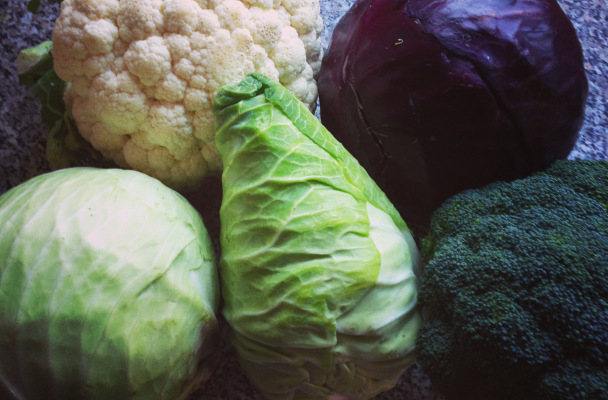We have all seen lists of popular superfoods on the Internet more than once. Superfoods are natural products that contain a large number of beneficial substances, in particular powerful antioxidants, which give these products almost magical ability to prevent the development of such terrible diseases as cancer, diabetes, obesity, diseases of the cardiovascular system.
However, it is important to realize that despite the truly impressive facts about these natural wonders, simply eating a handful of sesame seeds during the day or broccoli for lunch is unlikely to improve your health in a fantastic way.
In order for a product that contains antioxidants to bring substantial health benefits, it must be eaten constantly and in sufficient quantities. That is, it must become a part of your daily diet, your way of life. In addition, you need to exclude from your daily "menu" all toxic and potentially dangerous products.
How free radicals work
One of the key components of superfoods is antioxidants. Vitamins A, C, D, E, as well as various minerals and phytonutrients such as carotenoids and polyphenols found in vegetables, fruits and berries (quality tea and coffee, organic raw honey, garlic, broccoli, spinach, carrots, tomatoes, red grapes, strawberries, raspberries, blueberries, blueberries and many other plants are considered foods with antioxidant activity) have antioxidant properties.
In simple terms, antioxidants are active substances that fight free radicals. What are free radicals and why do we need to fight them? The fact is that free radicals are molecules that are not very "friendly" to the human body. They have a free (unpaired) electron. And this is just the cause of all the troubles. The free electron lacks a "pair", so it tries to steal the missing electron from healthy cells. As a result of this "theft", healthy cells cease to be healthy cells. They receive serious damage, as a result of which the oxidative process is triggered.
The word antioxidant means antioxidant, preservative. Can you guess what's on his "list" of duties?
In principle, free radicals are not an unexpected enemy for our body. Yes, some of them appear as a result of ultraviolet radiation, light or heat radiation, toxic substances. But free radicals can also form in the body during completely natural and normal biochemical processes. But if the body can fight this portion of free radicals on its own (with the help of special enzyme superoxide dismutase, of course), then it will need other allies to fight the rest of the harmful molecules.
How do antioxidants work?
Antioxidants - what are they? Antioxidants are allies ready to fight free radicals. The principle of their action is clear from their name: they bind the unpaired electrons of free radicals to oxygen atoms (the oxidant) and neutralize them.
Antioxidants have to "work" with very neglected situations. Judge for yourself: when the enzyme superoxide dismutase lacks power, free radicals start a real chemical wave. For example, if a free radical attacks a protein, it not only cripples the molecule, but also forms a new destructive character. And it, in turn, continues to destroy the body by pulling new and new electrons to pair with it.
With too many free radicals in the body causes a condition known as oxidative stress, in which tissues are damaged, the body ages, serious diseases arise. Most serious problems such as diabetes, obesity, diseases of the cardiovascular system, are associated with oxidative stress.
Antioxidants are substances that have the ability to bind and, consequently, to neutralize damaging free radicals, so it is not surprising that eating foods rich in antioxidants helps to avoid the emergence and development of diseases.
Antioxidant "menu"
Understanding the importance of antioxidants to human health, experts emphasize their introduction into the diet. Usually we get them with food. But since the ecological environment of our cities does not improve every year, and stresses and deadlines at work become more and more frequent, vitamin complexes and biological supplements are often called upon to help food.
Antioxidants include vitamins A, C, E, and minerals such as selenium, zinc, copper, chromium, and manganese.
The most famous and most powerful antioxidant is vitamin C. In addition to the fact that ascorbic acid is involved in the formation of collagen (that is, keeps the beauty of the body and slows the aging process), it has another extremely useful property - it does not allow the body to destroy vitamins A and E. Vitamin C (and therefore antioxidants) can be found in rose hips, citrus seabuckthorn, black currants, strawberries, parsley greens and dill.
Vitamin E (tocopherol) is a fat-soluble compound that has beneficial effects on the skin, reproductive system and is a powerful element in the prevention of atherosclerosis. Sufficient amounts of this antioxidant can be found in wheat germ oil, nuts (almonds, peanuts, cashews), fish (salmon, zander, eel).
Vitamin A (retinol) protects internal organs from negative environmental factors (chemical pollution, radioactive, magnetic) and supports the immune system. Vitamin A is rich in orange and yellow fruits and vegetables (apricots, nectarines, peaches, carrots, mangoes), fatty fish, green vegetables (spinach, broccoli, zucchini).
By regularly eating dishes from these foods, you will soon enough experience what antioxidants do and how serious their positive effects are.
Cabbage

There's a reason we singled out cabbage as a separate item. Cabbage is probably the coolest and most readily available superfood that's easy to incorporate into your daily diet.
Judge for yourself. First, the variety of types of cabbage (broccoli, white cabbage, red cabbage, Brussels sprouts, cauliflower, Savoy) and dishes made of it, captivate even the most discerning gourmet. Secondly, these products, ripened naturally, contain a huge amount of phytonutrients (antioxidants). So you can count antioxidants in foods as one of the great health benefits of eating a balanced diet.
Phytonutrients help prevent cancer by supporting overall cellular health and improving communication between cells, and strengthening the immune system. Cabbage family vegetables also contain omega-3 and B-6 vitamins, folic acid, C, E, zinc, manganese and vitamin K, which has anti-inflammatory properties.
Third, kale is a cheap and affordable product. You can find several types of cabbage in stores and markets at any time of year. My favorites are Brussels sprouts and red cabbage. Although I love cauliflower, broccoli, savoy and white cabbage as well.
My new Liveup! recipe app has quite a few cabbage dishes: soups, side dishes, main dishes, and appetizers.



You must be logged in to post a comment.